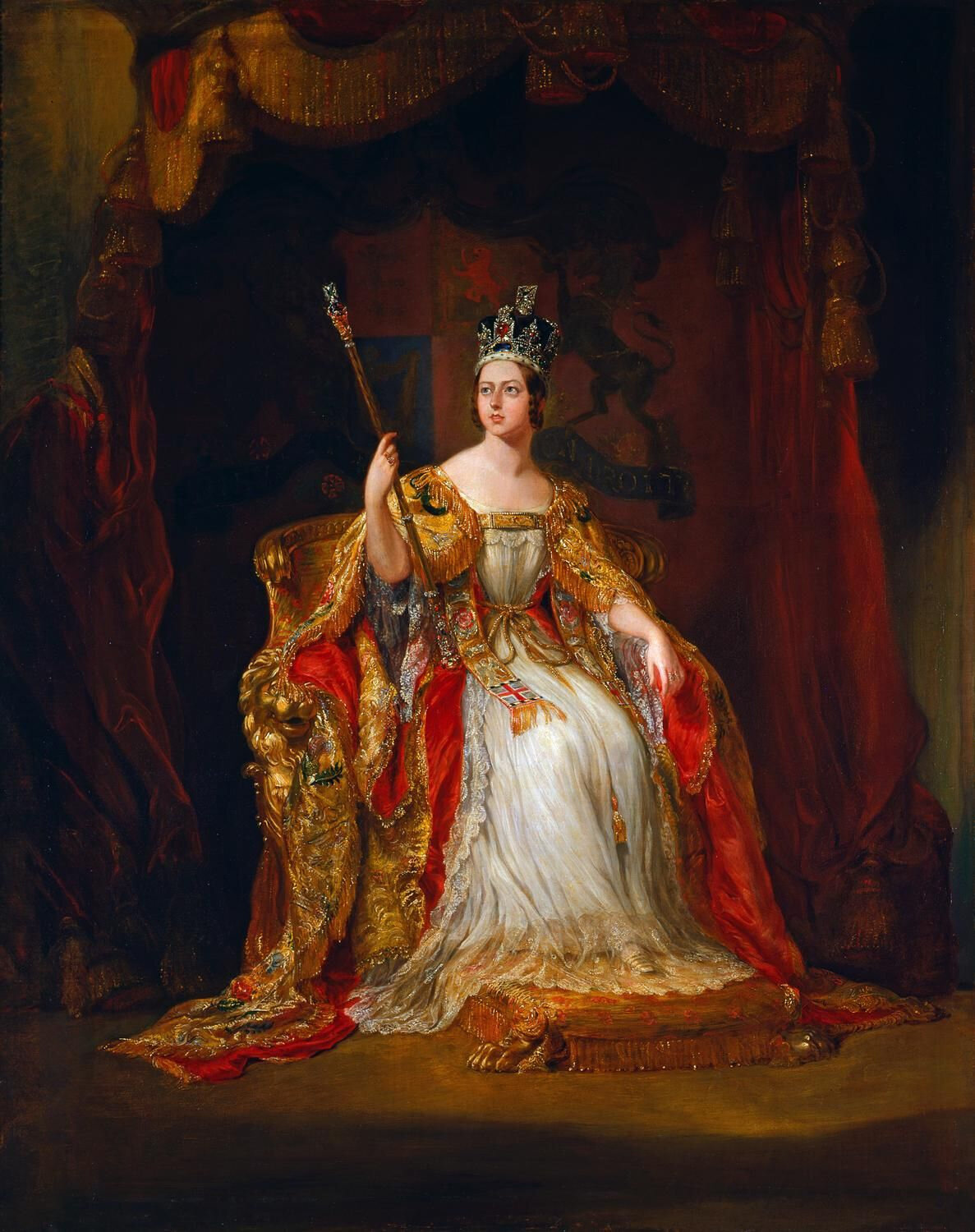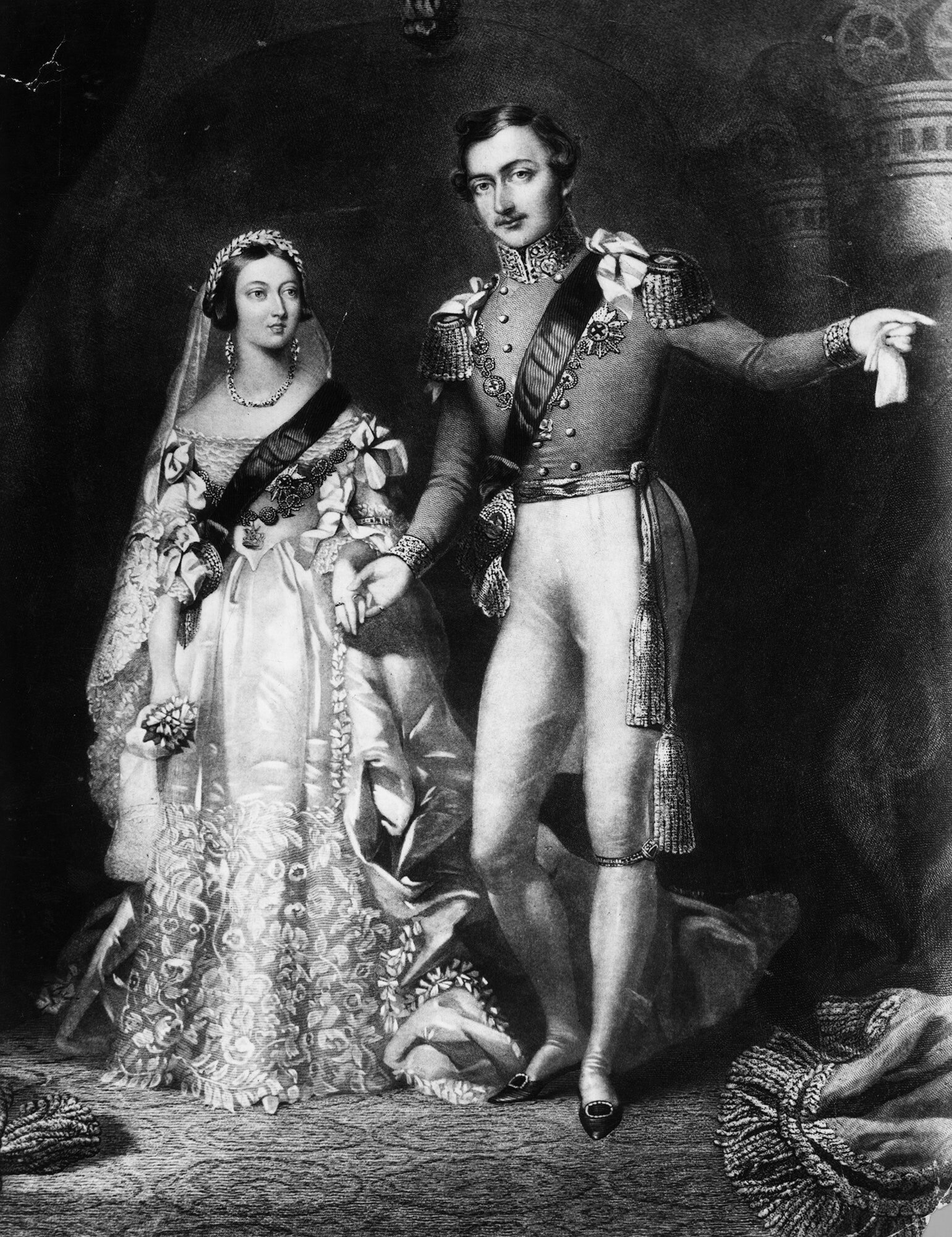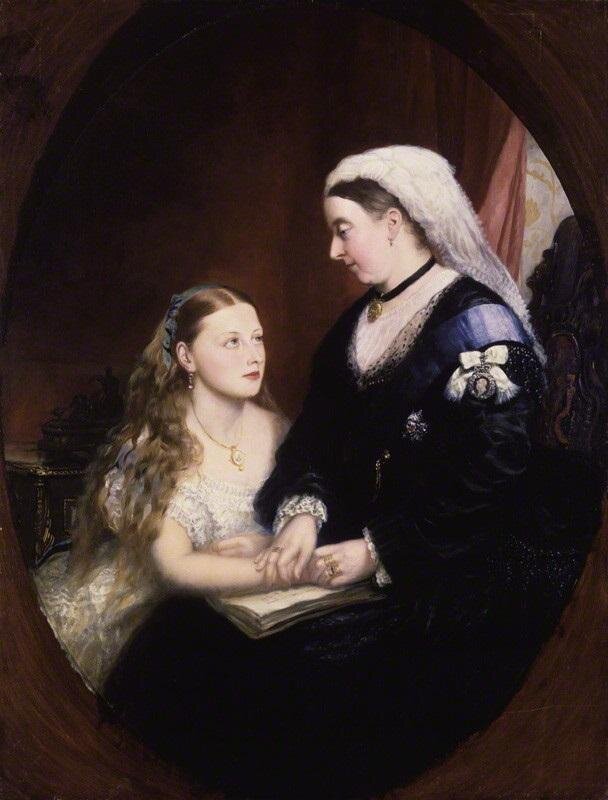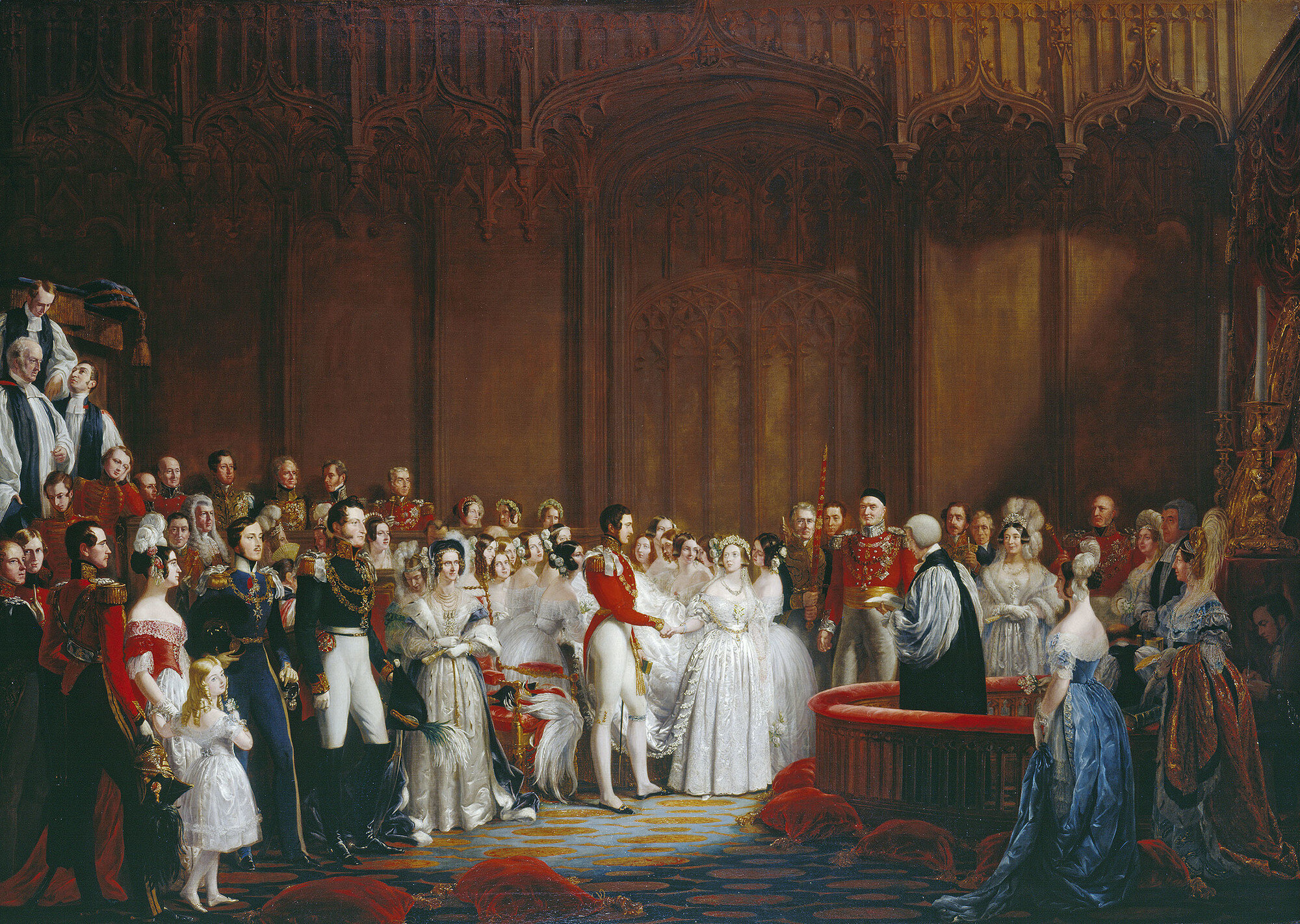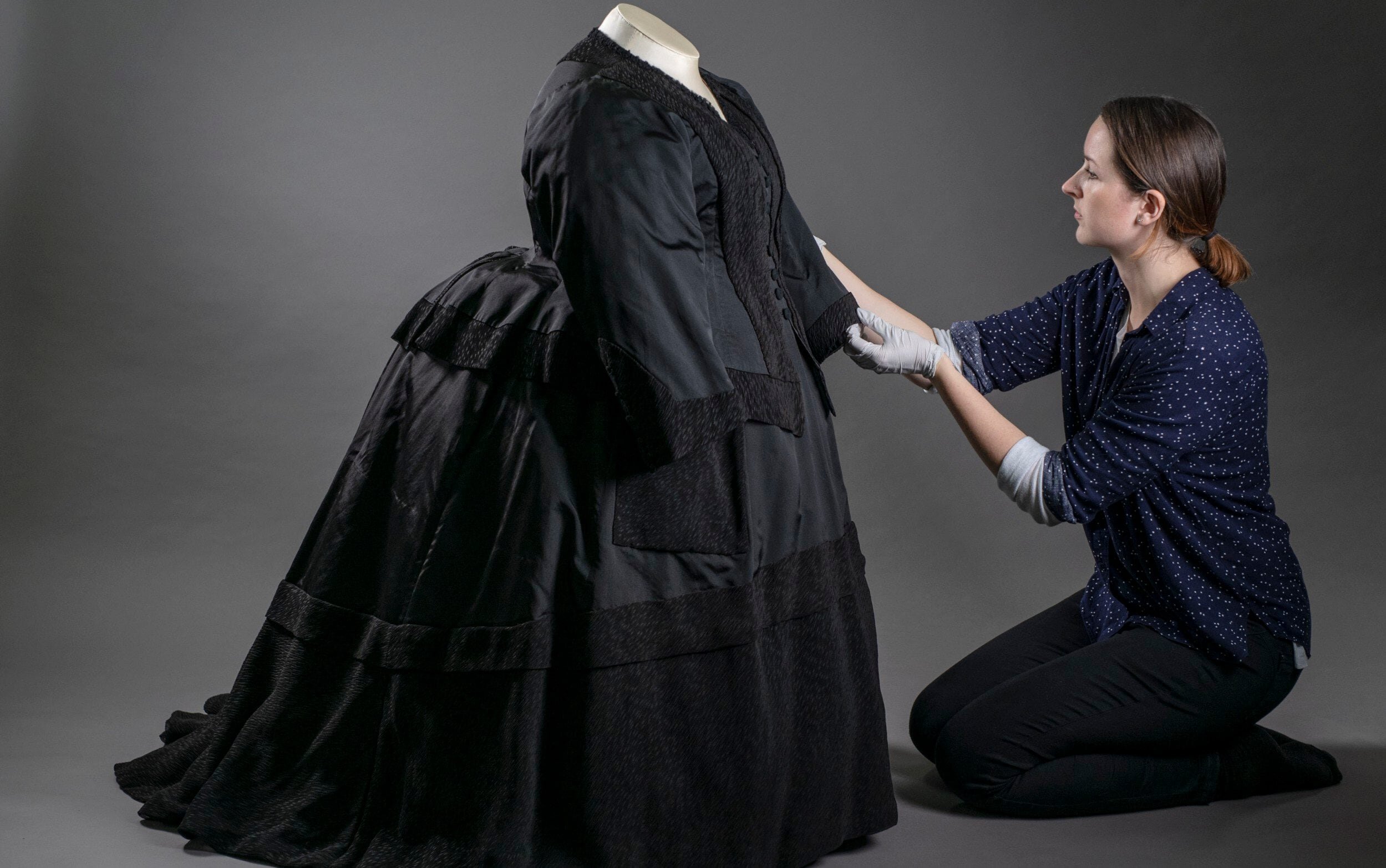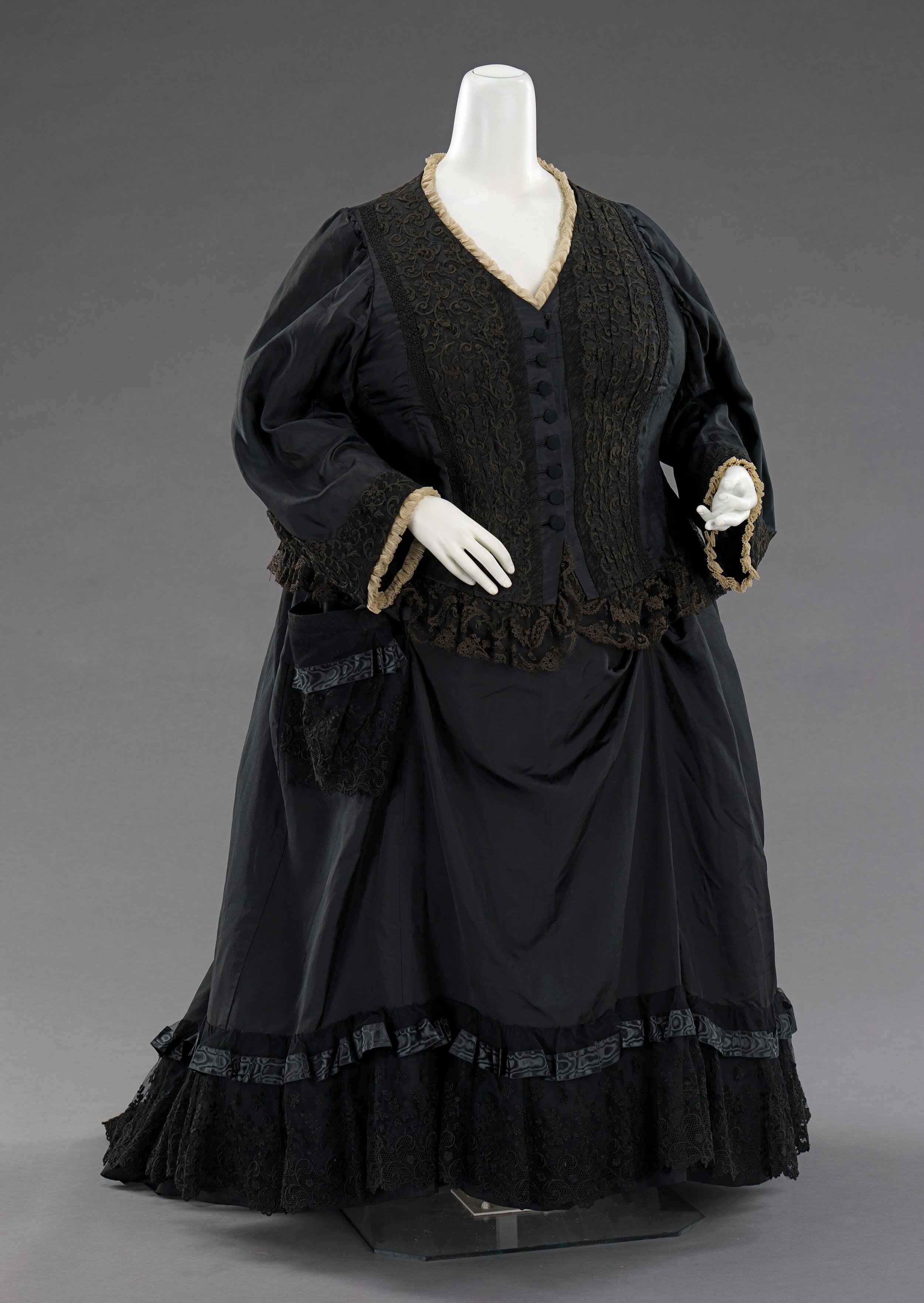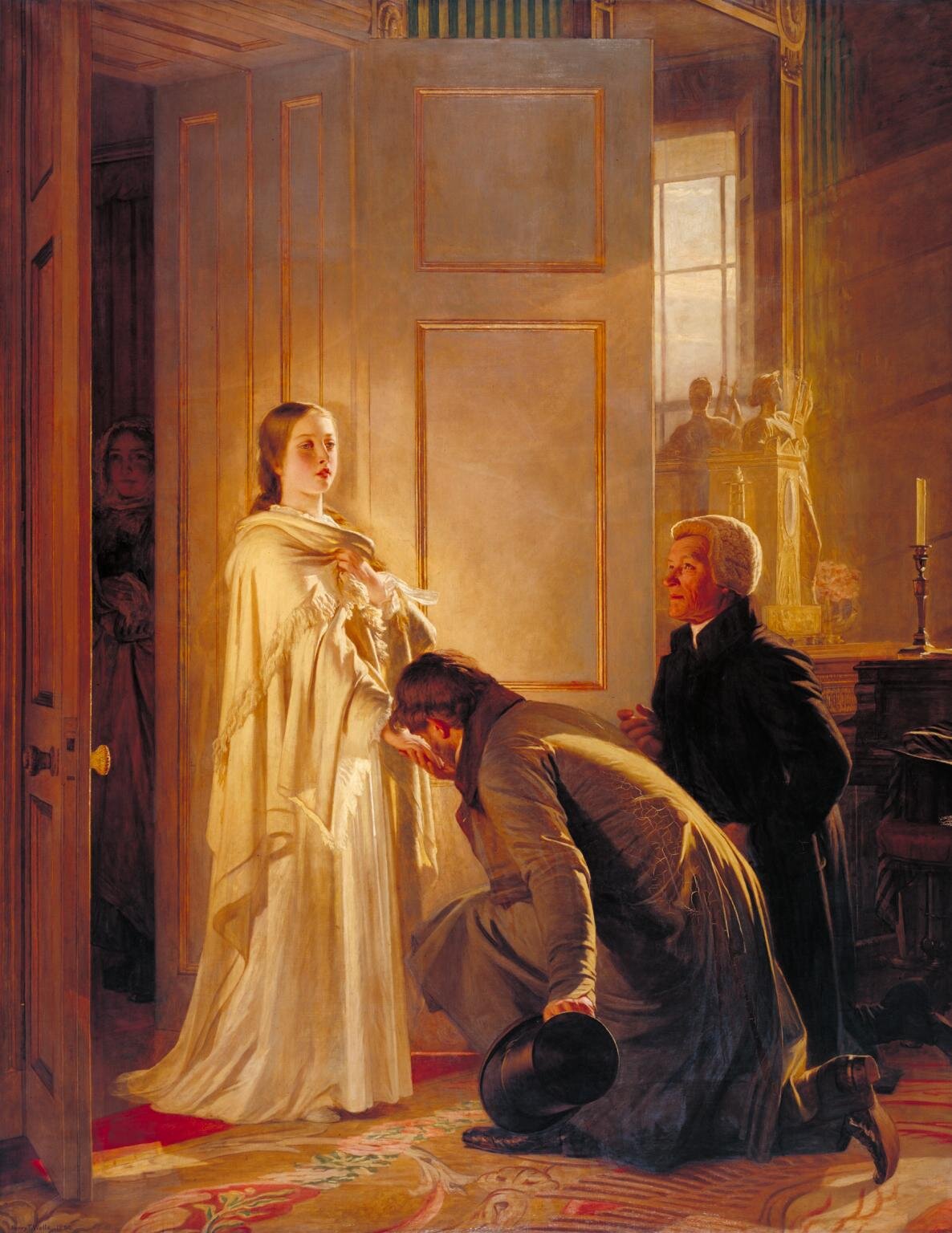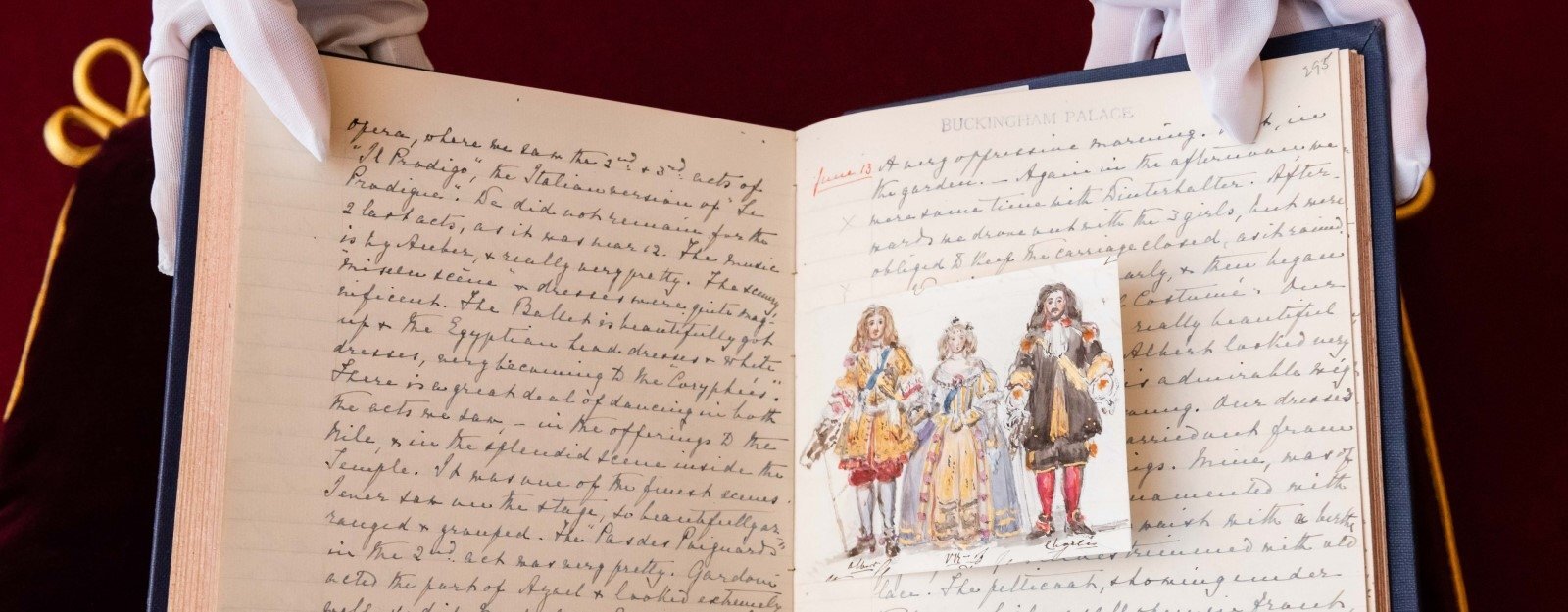42 Facts About Queen Victoria
Queen Victoria in her coronation robes SOURCE: Historyextra.com
Queen Victoria was born on the 24th of May 1819.
When she was baptised, her full name was Alexandrina Victoria.
Victoria inherited the throne on the 20th of June 1837, although her coronation took place a year later on the 28th of June 1838.
Victoria married with her first cousin, Prince Albert of Saxe-Coburg-Gotha on the 10th February 1840. The couple had nine children together, their first child Victoria, born on the 21st November 1840, and their last child Beatrice, born on the 14th April 1857.
All of their children married into European royal families; this led to Victoria becoming known as the "grandmother of Europe".
Queen Victoria died on the 22nd of January 1901.
Left: Queen Victoria's Coronation portrait full version, by Sir. George Hayter. Right: Queen Victoria's Coronation portrait detailed version, by Sir. George Hayter.
When she was born, she was fifth in line to the throne.
Victoria's childhood was in her own words "rather melancholy". She was raised in isolation by her mother under a set of rules known as the Kensington System.
Victoria studied various modern languages as well as Latin under a private tutor, and spent her time playing with her dolls and her dog, Dash
Victoria actually had two books published about her travels in the Scottish Highlands.
Being during the reign of Queen Victoria, the stamp featured a portrait of her in profile, and (due to its colour) was known as the Penny Black. A mint condition Penny Black can today sell for more than £2000.
Although Victoria was declared Empress of India, she sadly never got the chance to visit India.
One of her favourite books was The Strange Case of Dr. Jekyll and Mr. Hyde.
In 1887, Britain celebrated the Queen's fifty years on the throne with the Golden Jubilee; there was a great many street parties and events. Ten years later there were even more nationwide celebrations as people celebrated sixty years of Victoria’s rule with her Diamond Jubilee.
Almost immediately after being told the news that she had ascended to the throne, Victoria removed her bed from her mother’s room.
Princess Victoria aged Four, by Stephen Poyntz Denning.
Victoria’s nine children were as follows: Victoria (born in 1840), Edward Albert (1841), Alice Maud Mary (1843), Alfred Ernest Albert (1844), Helena Augusta Victoria (1846), Louise Caroline Albert (1848), Arthur William Patrick Albert (1850), Leopold George Duncan Albert (1853) and finally Beatrice Mary Victoria Feodore (1856).
Victoria and Albert also had 42 grandchildren. Although Albert only lived to meet two of these, the Queen in fact met all of them - as well as many of her eighty-plus great-grand children.
Queen Victoria's last surviving grandchildren Princess Alice, Countess of Athlone, passed away relatively recently - in 1981 at the grand old age of 97.
Princess Beatrice, Victoria’s youngest child, in fact became the Queen’s closest family companion after she was widowed
Left: Wedding of Queen Victoria and Prince Albert. Middle: Queen Victoria and her closest family companion Princess Beatrice, her youngest daughter. Right: Wedding Ceremony of Queen Victoria and Prince Albert.
Victoria was a prolific writer. She made an entry in her diary e very single day of her adult life, regularly writing more than two thousand words. A fair proportion of the diaries survive to this day (although sadly some were destroyed by accident) which has given us a fantastic insight into her life.
The Queen was a skilled artist and made a number of sketches. However, they were very much for her own enjoyment and not for public viewing. When a journalist got hold of some of her drawings, Victoria applied to the courts for an injunction to be ordered, banning the publication of her artwork. This was in fact one of the first times in history that a monarch had requested such an order from a court.
Queen Victoria was 152 centimetres tall - that is around five feet.
Queen Victoria's Tiny Mourning Dress
Victoria was born at Kensington Palace in London and died at Osborne House of the Isle of Wight.
Victoria’s first language was in fact German - she only learned to speak English at the age of three.
During Queen Victoria’s reign, Britain grew into the most powerful country in the world, putting her in charge of the biggest empire the world has ever seen - over a quarter of the world’s population were under her rule.
Victoria was the first British Monarch to ride on a train, use a telephone and to have electric lights.
Victoria was the first monarch to live at Buckingham Palace in London, now the main residence of Queen Elizabeth II.
She couldn’t abide the smell of tobacco smoke and had ‘no smoking’ signs placed in the majority of the rooms at the Palace.
Victoria and Albert wished for a summer retreat, and so between 1845 and 1851 had Osborne House built in East Cowes on the Isle of Wight.
Osborne house was designed by Thomas Cubitt in conjunction with Albert himself; Cubitt had also built the main façade of Buckingham Palace.
Queen Victoria was not a fan of the telephone, which was in vented during her reign; she found the medium cold and impersonal.
Victoria was an accomplished linguist and could speak fluently in a number of languages other than English, including French, German, Urdu and Hindi!
At the end of her reign, Victoria was officially referred to as ‘Her Majesty Victoria, by the Grace of God, of the United Kingdom of Great Britain and Ireland Queen, Defender of the Faith, Empress of India’.
Further to this, she also left written instructions that her funeral be white and not black. When Victoria died, she was placed in her coffin in a white dress and wearing her wedding veil. Quite beautifully, as she was laid to rest in the mausoleum at Windsor, it began to snow pure white.
Victoria developed a friendship with Abdul Karim, one of h er Indian servants. He had been ‘given’ to Victoria as a gift from the viceroy of India - although Victoria insisted right away, he was free to make his own choices about his employment. He decided to remain as her servant and worked his way up from being a waiter to the then-lofty heights of being her Munshi (teacher). The Queen’s advisors were angry that she treated an Indian as equal to a white man, and demanded she choose between him and them. She chose him!
Victoria was a big fan of Indian food and enjoyed chicken curry every Sunday at Osborne House.
Queen Victoria was the first British monarch to own the Koh-I-Noor diamond, one of the world’s largest. It was 793 carats when uncut; it is today 105.6 carats, cut down from its previous 186 carats on the orders of Albert in 1852.
When she died, Queen Victoria lay in state for two days.
As we know, Victoria and Albert both had an appreciation o f art. However, their views did in fact differ slightly - and perhaps in the opposite way to what you might expect; Albert was rather reserved in his tastes, almost to the point of being prudish, whereas Victoria was a big fan of paintings which featured plenty of bare flesh! Perhaps trying to convince him to expand his interests, Victoria actually gave Albert nude paintings as presents on a number of his birthdays!
Queen Victoria was the first known carrier of an affliction called haemophilia. This is a blood-clotting disorder which can be passed along the maternal line of families; it is generally carried by women, but men are more likely to develop it. Those who suffer from it bleed heavily as their blood does not clot as normal. Victoria’s son Leopold and grandchildren Friedrich, Maurice and (another) Leopold died of the affliction, which came to be known as ‘the royal disease’.
Victoria had a stalker! A young lad called Edward ‘the Boy’ Jones developed an infatuation for her, and broke into Buckingham Palace on a number of occasions. He sat on her throne, hid under her sofa, and on one occasion is believed to have stolen some of her underwear! In 1841, thankfully for the Queen, he was caught and shipped off to the colonies!
Victoria had a pet African grey parrot called Coco. She trained him to sing the national anthem, God Save the Queen.
Left: Painting Victoria Regina by, Henry Tanworth Wells. Right: Diary of Queen Victoria.
Ladies and gentlemen, I am Ecesu, your new History blogger who admires History, History of Art and Literature.
I am studying History of Art at university, and I am a junior student. I really admire Renaissance, Baroque, Modern and British Art. During my junior year, I became interested in Renaissance & Baroque Art.
Follow me @lilyarthistoran
Thanks for reading

